hankyoreh
Links to other country sites 다른 나라 사이트 링크
[Travels]Light at end of tunnel in sight for pandemic-hit Myeongdong
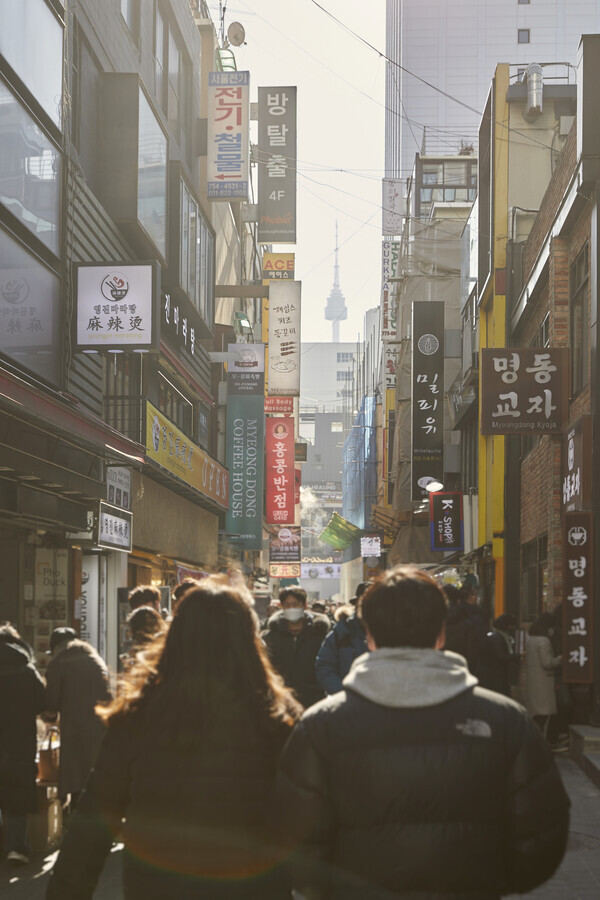
Every time I visited central Seoul’s Myeongdong neighborhood starting late last year, it felt as if the district's once crowded streets had suffered aerial bombings that now left them absolutely deserted. There were more empty buildings than there were people in Myeongdong, known to have been an area that never sleeps even during the Korean War. Commercial buildings that once boasted long waiting lists for potential tenants now stood forlornly with signs that read “Out of Business,” “For Rent,” “No Premium.”
Things were more dire in the side streets deep within the neighborhood, where there were no open businesses in sight. Though the official vacancy rate for Myeongdong’s commercial buildings is around 50%, the neighborhood’s merchants say the vacancy rate for properties on small alleyways come close to 70% to 80%. The business owners I met all began our interaction with a sigh, shaking their heads. One street vendor’s words stuck out: “I only come to work because I haven’t died yet.”

It’s no exaggeration to say that Myeongdong has been dealt a devastating blow by COVID-19. The damage wrought by the pandemic was aggravated by the neighborhood’s unusual business model, which depended entirely on tourists from overseas.
Koreans have tended to avoid Myeongdong since its businesses began catering their services to foreign tourists in the 2000s. But that wasn’t much of a problem when the Korean Wave was in full swing, with 15 million foreign tourists visiting the country each year.
But with the pandemic raging, Korea saw fewer than 1 million tourists last year.
“Even during the Korean War, the lights never went off in Myeongdong. This is the worst imaginable situation. Before COVID-19 struck, 90% of our sales came from foreign tourists. That wasn’t an ideal arrangement,” said Kim In-su, secretary-general of the Myeongdong Special Tourist Zone Association.
Does this spell the end of Myeongdong? The shopping district may be passing through a dark tunnel, but a gleam of light can be seen in the distance. According to a survey of Korea’s top 100 shopping areas published in December last year by SK Telecom, after comparing the sales and foot traffic in each area, the area around Myeongdong Station ranked No. 90, three spots higher than in 2020. That’s faint praise, considering that Myeongdong had been Korea’s biggest shopping area since the Japanese occupation, but it could indicate that Myeongdong’s situation won’t get any worse.
In various parts of the neighborhood, it’s possible to see old buildings being torn down and new buildings going up. Developers seem to be seizing the opportunity — when the buildings are largely unoccupied — to put up new ones. That’s a modest change for the neighborhood, but one that had been rarely seen before.
The most encouraging sign is that businesses that had depended upon foreign tourists are nearly all gone and are gradually being replaced by new hot spots that cater to a Korean clientele. Now that rents are down 40%-50% from their peak and premiums paid to outgoing tenants aren’t an issue, adventurous businesspeople looking for a foothold in Korea’s biggest shopping district are knocking on the door of Myeongdong.
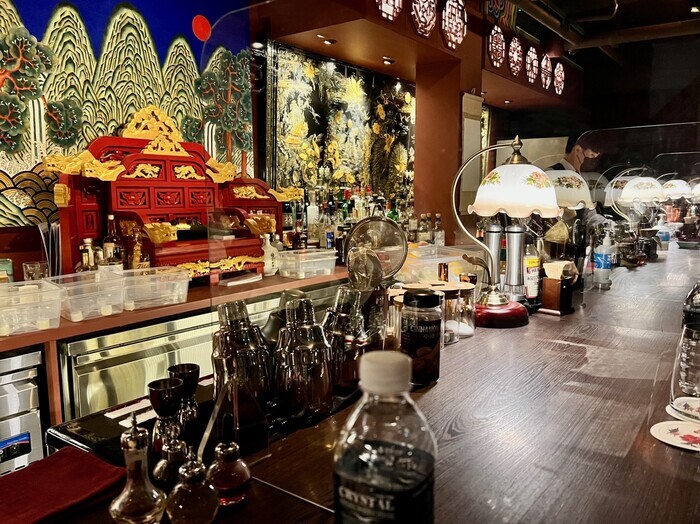
Some of the most talked-about photos on Instagram last year showed a cathedral behind a raised demitasse of espresso. The photos got huge numbers of likes, and in the comments, people raved about how European it all looked.
The photos were taken at Molto Italian Espresso Bar, which opened September last year. Located on the third floor of the YWCA building across from Myeongdong Cathedral, the café has a sprawling terrace that looks out on the cathedral. Molto became a huge hit soon after it opened in the building, which had been remodeled to create a new shopping space by an entrepreneur with a long-term lease.
So many people had crowded to the café that visitors had to wait an hour or more. The line of people waiting to take a photograph snaked down to the first floor of the building. The café was so inaccessible on the weekends that some patrons even took weekdays off to visit. The popularity of the café has some saying the Myeongdong shopping district still had some life in it after all.
When I visited Molto after it reopened on Jan. 10, following a brief vacation for the winter, the café was packed, even on a weekday. There were no empty seats inside, and people were drinking coffee and taking pictures on the terrace, even though the temperature was a frosty 10 degrees Celsius below zero.
“I’d been wanting to come here so badly since last year, but there were so many people I just gave up,” said Yeom Su-hyeon, 34, an office worker whom I met at the café.
“I took the day off so I could visit today. The view is really incredible,” Yeom said.
I overheard one visitor ask their friend to “take a picture with a European vibe.” That pretty much summed up how much these people are itching to travel.
Molto is an example of recycling existing resources instead of creating something new. As such, it’s believed to represent new horizons for Myeongdong.
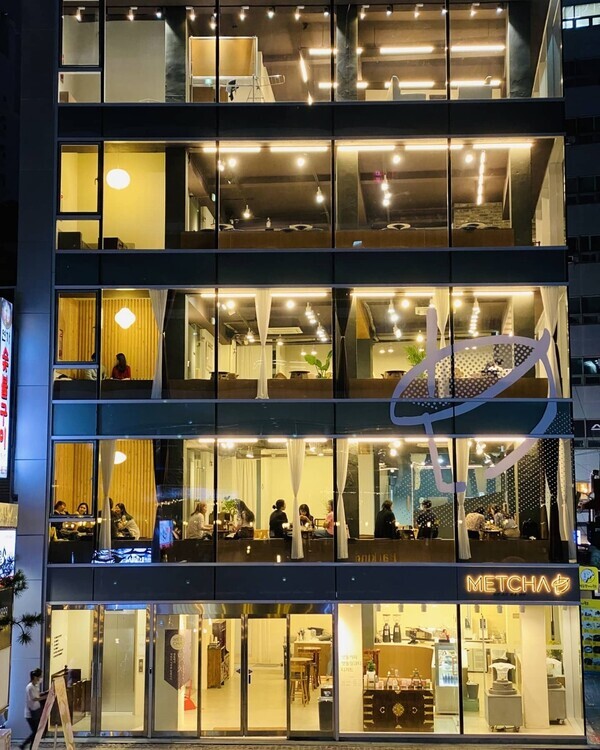
Along with new businesses like Molto that are sprouting up in the neighborhood, some established businesses are pulling up stakes and relocating to the shopping district. One of those is Metcha, a café located near Euljiro 1(il)-ga Station, on the Seoul subway. Since opening in Seoul’s Yeonhui neighborhood in 2018, Metcha has become popular for its line of proprietary teas.
The café’s owner, 38-year-old Cho Jae-yong, had initially kept the business fairly small. But as word of mouth brought more foreign tourists to the café, Cho relocated to Myeongdong last June with the hope of targeting that clientele.
“The rent here is much higher than in the Yeonhui neighborhood, but I thought it would make us that much more competitive. The pandemic has made things really hard for us, but fortunately we were able to adjust our rent, which has helped us to hold on,” Cho said.
Despite Cho’s talk of “holding on,” Metcha has become so popular that some say it’s bringing customers back to the side streets of Myeongdong. Metcha’s “milled coffee,” hand drip made by grinding coffee beans with a millstone, and its visually stunning matcha latte have gone viral, leading to long lines at lunchtime and on the weekend.
When I visited on a weekday, there were hardly any empty seats in the café’s four floors. While sipping on a cup of millstone coffee, I could also look out on the streets of Myeongdong. I spotted young people taking photos with one of Metcha’s signature vivid matcha lattes.
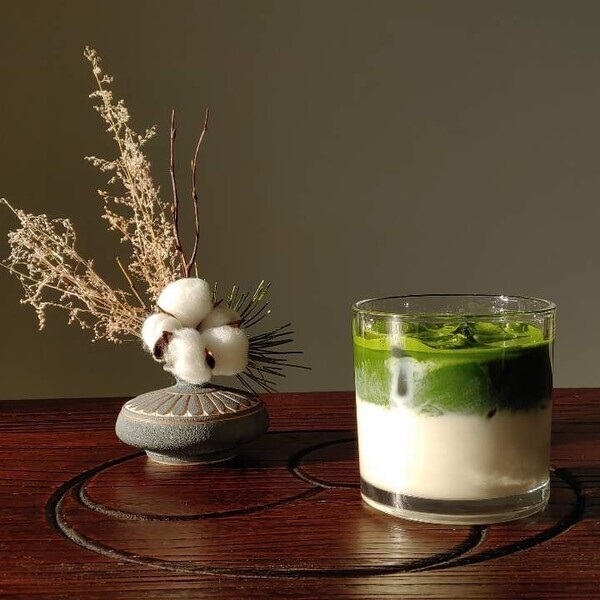
Metcha is just one of many popular establishments that are moving into Myeongdong. The opening of a branch of Bar SookHee has finally brought a speakeasy to a neighborhood that had lacked such hidden gems. Bar SookHee had already become popular in nearby Euljiro for its wide range of cocktails made with traditional Korean liquors.
The Myeongdong branch of Bar SookHee — which opened in December 2020, when the pandemic was already underway — has become a favorite spot for day drinking by discerning tipplers.
When I stopped by, I was stunned by the snappy and original interior, something I’d never dreamed of seeing in Myeongdong. Apparently inspired by Geunjeong Hall at Gyeongbok Palace, the interior was dazzling enough to dispel any urge to idly pull out my smartphone.
Even though I showed up at 3 pm, there were already customers waiting for service. “By 7 pm, all the seats are taken. And that’s just because of COVID-19. Once foreign tourists start coming, you’ll have trouble getting in at all,” said the bartender who was making my cocktail.
So why did they open the bar during COVID-19? “There was no rental premium, and the rent had gone down. We saw it as an opportunity,” the bartender said.
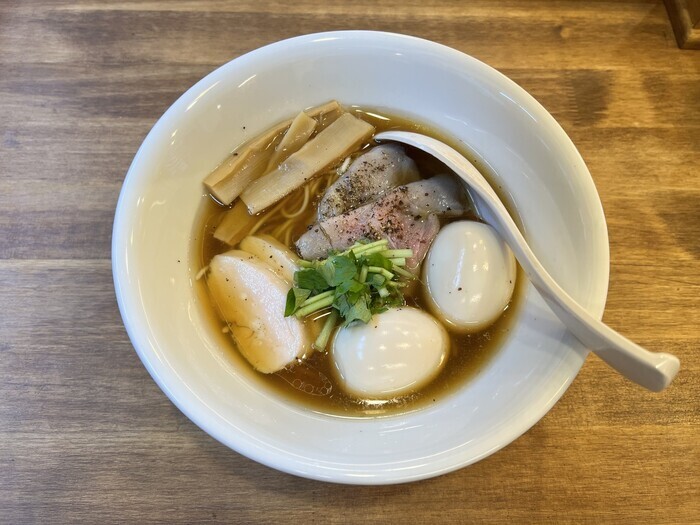
While COVID-19 presents new opportunities, it remains the greatest source of insecurity. But universally recognized quality has the power to outlast the pandemic.
Even now, people line up for some of Myeongdong’s best-known restaurants, such as Myeongdong Kyoja and Hadongkwan. Those eateries offer the finest flavor in their categories.
Menten, a popular Japanese-style ramen restaurant in the neighborhood, set up shop there in January 2019. Although the pandemic began just one year after the restaurant opened, it made waves when it was selected for the Bib Gourmand list of reasonably priced restaurants in last year’s edition of the Michelin Guide Seoul. There’s always a long line at Menten, which draws ramen aficionados from around the country.
When I tried it myself, I discovered that the ramen more than justified the wait. The authors of the Michelin Guide seemed to agree: “Each ingredient is precisely prepared and cooked, but the shoyu ramen, in particular, delivers a mixture of complexity and umami.”
Sure enough, quality is what enables a restaurant to endure the challenges of the COVID-19 era.
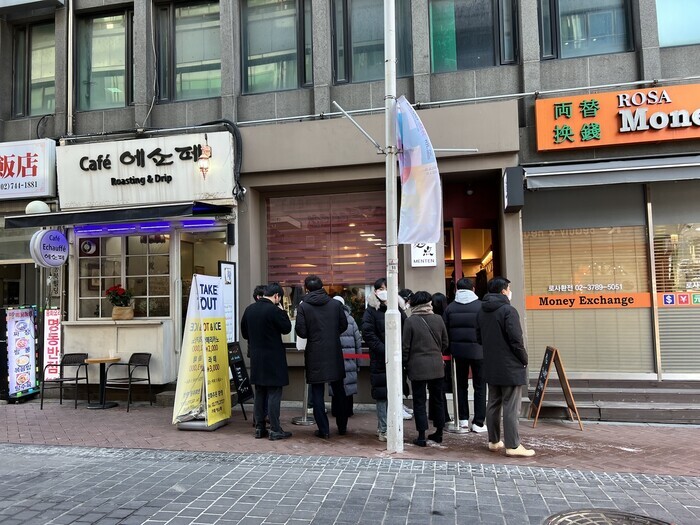
While it would be too soon to say that Myeongdong is back, we can cautiously conclude that the worst is over. Businesses are starting to open up. The only way to fully revive the Myeongdong shopping district is to prioritize quality and offer a definite appeal to the domestic market.
“If Myeongdong is to become vibrant again, there need to be more businesses that focus on Koreans, and in particular young people in their 20s and 30s,” said Cho Jae-yong, owner of Metcha.
“We need more development in different areas so that at least 40% of our sales can come from locals even after the pandemic is over,” advised Kim In-su, secretary-general of the Myeongdong Special Tourist Zone Association.
Myeongdong was the site of Korea’s first department store and its first stock exchange. It set trends and defined culture for Korean society when novelist Lee Bong-gu, known as the “Count of Myeongdong,” walked its streets.
Will Myeongdong be able to return to its former glory? Things may be dark for now, but a glimmer of light can be seen at the end of the tunnel.
By Lee Jung-gook, staff reporter
Please direct questions or comments to [english@hani.co.kr]

Editorial・opinion
![[Editorial] Intensifying US-China rivalry means Seoul must address uncertainty with Beijing sooner than later [Editorial] Intensifying US-China rivalry means Seoul must address uncertainty with Beijing sooner than later](https://flexible.img.hani.co.kr/flexible/normal/500/300/imgdb/original/2024/0517/8117159322045222.jpg) [Editorial] Intensifying US-China rivalry means Seoul must address uncertainty with Beijing sooner than later
[Editorial] Intensifying US-China rivalry means Seoul must address uncertainty with Beijing sooner than later![[Column] When ‘fairness’ means hate and violence [Column] When ‘fairness’ means hate and violence](https://flexible.img.hani.co.kr/flexible/normal/500/300/imgdb/original/2024/0516/7417158465908824.jpg) [Column] When ‘fairness’ means hate and violence
[Column] When ‘fairness’ means hate and violence- [Editorial] Yoon must stop abusing authority to shield himself from investigation
- [Column] US troop withdrawal from Korea could be the Acheson Line all over
- [Column] How to win back readers who’ve turned to YouTube for news
- [Column] Welcome to the president’s pity party
- [Editorial] Korea must respond firmly to Japan’s attempt to usurp Line
- [Editorial] Transfers of prosecutors investigating Korea’s first lady send chilling message
- [Column] Will Seoul’s ties with Moscow really recover on their own?
- [Column] Samsung’s ‘lost decade’ and Lee Jae-yong’s mismatched chopsticks
Most viewed articles
- 1[Editorial] Transfers of prosecutors investigating Korea’s first lady send chilling message
- 2[Exclusive] Unearthed memo suggests Gwangju Uprising missing may have been cremated
- 3[Column] US troop withdrawal from Korea could be the Acheson Line all over
- 4‘Shot, stabbed, piled on a truck’: Mystery of missing dead at Gwangju Prison
- 5[Column] When ‘fairness’ means hate and violence
- 6[Editorial] Intensifying US-China rivalry means Seoul must address uncertainty with Beijing sooner t
- 7S. Korea “monitoring developments” after report of secret Chinese police station in Seoul
- 8US has always pulled troops from Korea unilaterally — is Yoon prepared for it to happen again?
- 9Xi, Putin ‘oppose acts of military intimidation’ against N. Korea by US in joint statement
- 10China calls US tariffs ‘madness,’ warns of full-on trade conflict